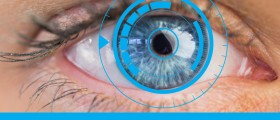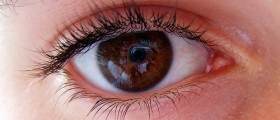
Retinopathy is a medical condition characterized by the damage of retina’s (part of the eye) blood vessels. By examining the eye, an ophthalmologist (a doctor specialized for eye problems) can check retinal blood vessels and detect any signs of changes or damage that have appeared. Frequent Causes of Retinopathy
This eye problem may be seen in premature babies, in people suffering from high blood pressure (hypertension patients) and also in diabetics.
Hypertension is not a very common cause of vision problems, but it can cause blockage of either arteries or veins in the retina and provoke vision loss. The risk of vision impairment is much higher in people who have high blood pressure and smoke or have diabetes at the same time.
Diabetic retinopathy, on the other hand, is quite frequent and this condition is considered the leading cause of vision loss in the United States. It usually takes a lot of time, sometimes even several decades for a diabetic person to develop such serious eye problem, but high blood sugar characteristic for diabetes is definitively and undeniably associated with high risk of loss of vision.
Both hypertension and diabetes have to last many years in order to affect vision and cause retinopathy, so this eye condition is considered to be a serious complication which may but does not always have to occur.
Less likely causes of retinopathy may be lupus and sickle cell disease.
Symptoms of Retinopathy
Hypertension-related retinopathy commonly show no symptoms in early stages, but further development leads to headaches, double vision or some other vision changes, as well as sudden vision loss that may affect just one or both eyes.
Diabetic retinopathy usually does not cause any signs and symptoms right away, when the condition is in its early stages. Doctors may see formation of microaneurysms, which could break and bleed into the retina and thus cause cloudiness of vision.
Further progression, however, may provoke blurry or fluctuating vision, double vision or even floating spots in the vision field. Certain number of patients complain about changes in color perception due to diabetic retinopathy while some have floating spots or suffer from sudden loss of vision. More advanced cases of this eye problem have been known to cause eye pain or proliferative diabetic retinopathy. The later condition may be recognized by the growth of new blood vessels in the retina and vitreous humour, which might swell, burst, bleed and damage the eye, as well as lead to retinal detachment and provoke total blindness.

















Your thoughts on this
Loading...